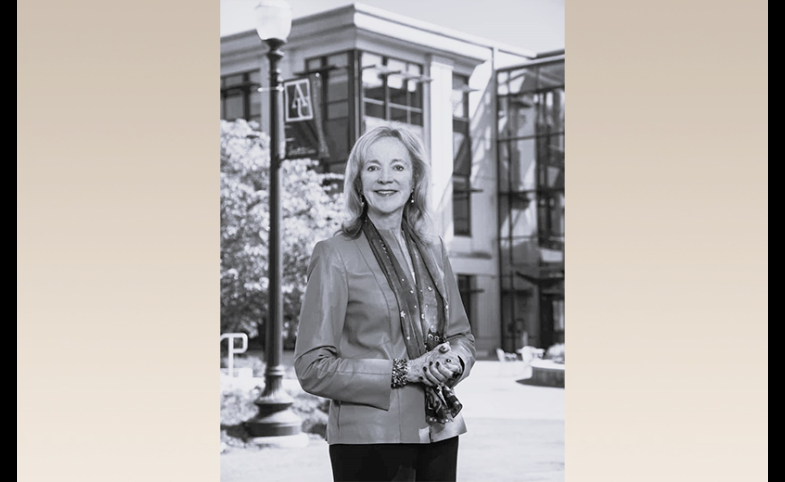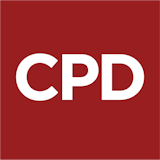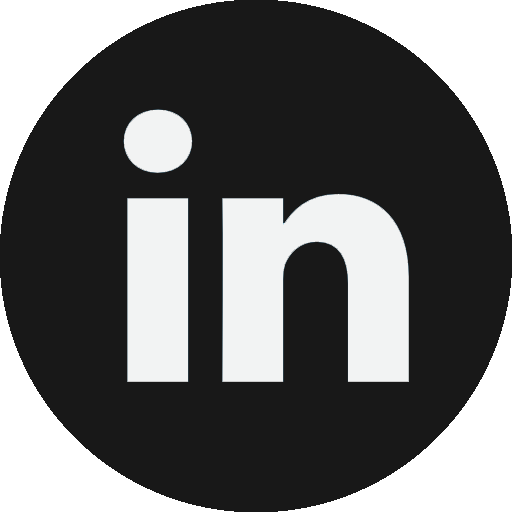
Q&A with CPD: Sherry Lee Mueller
In this series, CPD interviews international thought-leaders as well as key practitioners of public diplomacy and related professional fields to provide our readers with insight into the inner workings of some of the world’s most thoughtful PD practitioners. Here, journalist Danni Shuai speaks with Sherry Lee Mueller, a distinguished practitioner at American University's School of International Service (SIS), Washington, D.C. and an expert in cultural diplomacy and international exchange.
What first drew you to the field of citizen diplomacy?
I should start by confessing there was nothing international in my background initially, growing up on a farm in Northern Illinois. But I became active in my local chapter of 4-H, a rural youth organization that was widespread in this country and still is.
My 4-H leader went to the then-Soviet Union on one of the first farmer-to-farmer exchanges after the United States signed a cultural exchange agreement with the Soviets back in 1958. A few years later, he traveled to the Soviet Union. He returned and showed his slides to our Club. I don't think I was ever the same. I don't know what I expected, but their wheat looked like our wheat.
His slides just piqued my interest in things international. Then a girlfriend went abroad on an AFS program, and I was fortunate enough to go abroad on an Experiment in International Living summer program when I was in college. I lived with a German family—still have a wonderful “sister” from that family—and we've been friends for more than sixty years now. That summer, that family had a good sense of how to expose me to new things and broaden my very limited, parochial horizons. That was the transformative experience that made me so interested in how an individual gets involved in international relations.
How do you define citizen diplomacy in today’s context? How would you describe the relationship between citizen diplomacy and public diplomacy?
When I served as President of Global Ties U.S., we actually had this definition stenciled on the wall: "Citizen diplomacy is the concept that the individual citizen has the right—even the responsibility—to help shape foreign affairs." And pre-pandemic, we said, “one handshake at a time.” We’re getting back to that.
Citizen diplomacy prompts that question—what can one person do? We usually do it in the context of organizations. I mentioned 4-H. I mentioned the Experiment in International Living, and other exchange organizations. But my whole career, I've been very interested in the role of the individual in international relations.
You also asked how public diplomacy and citizen diplomacy are related. I would say in multiple ways. For our purposes today, I would define public diplomacy as a government’s official effort to impact public opinion abroad—and governments fund programs to do this, ultimately to have foreign countries adopt policies that align with their national interests.
One good illustration in the U.S. case—where public diplomacy and citizen diplomacy support each other—would be the State Department’s International Visitor Leadership Program. We bring professionals from abroad for three weeks. They’re chosen by our embassies as opinion leaders in their countries, and they’re invited to the United States to connect with their U.S. counterparts, develop relationships, and, ideally, return with a better understanding of U.S. history and heritage.
As with many major U.S. exchange programs, there's a private sector partner. I mentioned Global Ties U.S. and the 80 community organizations that comprise that national network of NGOs. So, for example, if you’re a Member of Parliament from the U.K. and you’re on this program, your time in Dallas or Detroit would be organized by the local NGO partner community-based member of Global Ties, U.S. in cooperation with the State Department.
These local partners have many volunteers who provide home hospitality, meet in their offices, open schools and agencies to these visitors—these are citizen diplomats. And they directly support this 85-year-old U.S. government effort to build long-term relationships with future leaders abroad.
Sometimes, public diplomacy and citizen diplomacy are at odds. For example, I think at one point when President Trump was criticizing the South African president in the Oval Office, the University of Michigan happened to be in Pretoria doing concerts. So, maybe the current PD leaders weren’t thrilled with that coincidence.
Other times, citizen diplomacy is entirely separate from the government. But often, the two overlap when a government-funded program also draws in citizen diplomats. Sister Cties, for example, sometimes receive government support—so that’s a case of complementarity.
You’ve emphasized the importance of the “three Rs” in public diplomacy: reciprocity, relationship-building, and a relentless search for common ground. Could you expand on what each of these principles means in practice? How do you see them being applied, or needing to be applied, in today’s global environment?
The way I’m using this phrase—and I think these three principles apply whether we’re discussing public diplomacy, cultural diplomacy (which is a subset of public diplomacy), international exchange (another subset), or citizen diplomacy—effective practitioners in each area would embrace these principles.
The first one is Reciprocity. My favorite way to illustrate this is in the context of exchanges. The United States Information Agency (USIA), from 1953 to 1999, was the primary way the U.S. government practiced public diplomacy. As head of a private sector partner for USIA, and later for the State Department, I would often go to their headquarters in Washington. On the building was a brass plaque that said, “Telling America’s story,” which USIA defined as its mission. I appreciate that they put it on the wall—I like when people are really clear about what they’re about.
However, I still teach my students that I would have loved to see a bigger plaque that said: “Telling America’s story is done best by good listeners.”
Because I think, whether it's public diplomacy or citizen diplomacy, it’s a peer-to-peer relationship. It’s not a donor and a recipient. You could cast it that way, I suppose. But I think the constructive way to establish good communication is to think of it in terms of partnership and reciprocity.
So, when international visitors—like the member of parliament we’ve been talking about—come to the United States through the International Visitor Program, when does that participant get the chance to share her country, her culture, her professional expertise? It’s not just about Americans telling her how we do things. It's about creating dialogues and interactions where information flows both ways and hopefully cooperation ensues.
The second “R” is Relationship-building. Fundamentally, I think public diplomacy is at its best when it's about building long-term relationships. The same goes for citizen diplomacy. These relationships become the human connections that serve as the context for all the other interactions that might come later—whether it's negotiating a security pact or signing a new trade deal.
From the American perspective, if someone on the other side has been a Fulbrighter or an International Visitor, they establish rapport more quickly. And research shows that the advantage of interacting with someone who has participated in an official exchange program is very real.
Every major power does this. I tend to give U.S. examples because I’ve spent most of my career here. But you could give Chinese examples, French examples—the French, who we often think of as the forefathers of cultural diplomacy, would be quick to offer theirs. Any major country has these kinds of programs.
And then the third “R” is the Relentless search for common ground. That phrase isn’t mine. I first heard Bill Clinton use it to describe the Fulbright Program when he received the Fulbright Prize in 2004 from the Fulbright Association. He had interned for Senator Fulbright. I happened to be present when he presented the senator with the Medal of Freedom before the Senator passed away in 1995.
I love that phrase, “the relentless search for common ground,” because to me, these programs aim to develop an appreciation of cultural differences and find ways to bridge them. But I think the real heart of the programs is to help people understand common human aspirations.
That’s why, whenever we had international visitors, I always loved to get them into schools. School is one of those universal experiences. We’ve all been to school. We all want our children to be better educated. It’s a powerful example of a shared human goal.
You’ve dedicated your professional life to “talking to strangers” and “bridging the gaps.” What values have guided you throughout this work? What challenges have you encountered?
I mentioned I went to Germany on my very first exchange program. My parents took me to O’Hare Airport so I could catch a plane for a student ship to Europe back in 1963. Think about this—I knew no one in Germany. I knew no one in my American group. I didn’t know my American group leader. And the last thing my mom said to me when they put me on the plane was, “Sherry, remember, don’t speak to strangers.”
So, I always laugh about that. Over the years she would still say that before I went overseas. For instance, when I was going to be a State Department speaker in Saudi Arabia, where I knew no one, she’d say, “Sherry, remember—don’t speak to strangers.”
So, I made a career out of speaking to strangers—and out of training other people to do it effectively.
I think it's critical in this divisive world, where we have so many sources of information and those sources often conflict. We need to get some of our information by actually interacting with people—in real life as well as online. I think it’s important to do both.
Edward R. Murrow, a famous journalist in the last century who ended his career as John F. Kennedy’s Director of the United States Information Agency, always said: “The most important distance in communication is the last three feet.” And I think that’s a very good motto.
You asked about some of the values that guide my work—and I think guide those people who are effective practitioners of public diplomacy and citizen diplomacy.
It sounds basic, but I’d start with honesty and integrity. We have to be able to count on one another. If you don’t start with that, it’s awfully hard to make progress.
After that, I’d say curiosity. When I’ve given career talks—and I still give a few, often based on the book Working World—people often ask: “What are the traits you need to be successful in international relations?” I always say the most important trait is genuine curiosity. I consider myself a lifelong learner. I think the best practitioners are constantly trying to learn. They want to understand: Why did this unfold the way it did? What’s the context?
I tell my students: wear two hats. One hat is the role you play. For example, when I was president of Global Ties, certain things came my way just because I was president. It didn’t matter that I was Sherry—it was the role I occupied.
But then I say: wear a second hat—it's the hat of being a student of the process. Step back and observe what’s going on more objectivity. That capacity to reflect is important. And I would link that, interestingly, to empathy.
In these fields, empathy is critical. You have to ask: How does this other person feel? Maybe it’s their first time leaving their country. Maybe they’re doing business or studying in a place they’ve never been before. What prepared them for this moment? What do they need?
And if you’re the one administering an exchange program, what can you do—within your power—to ease their anxiety, to make them feel more welcome?
So, if I had to name key values, I’d say: honesty, curiosity, the ability to step back and reflect, and empathy.
Now, the challenges.
For all public diplomacy practitioners, at least in the United State one of the big challenges has been our historical overreliance on military power. That’s playing out in the current administration, but it’s been true for others as well. We’ve chronically underfunded public diplomacy and cultural diplomacy for a very long time.
Sometimes people ask, “Why hasn’t your public diplomacy been more effective?” And I say, “We’ve barely tried it.” The entire Bureau of Educational and Cultural Affairs was funded at $770 million at its peak—and who knows what it’ll be in FY 2026?
I recommend Bruce Gregory's book, American Diplomacy’s Public Dimension, published last year. I’m lucky enough to know him as a friend and colleague because we both studied atat American University years ago.
He sets all of our public diplomacy activities in the broader context of U.S. diplomatic history, going back to colonial times and our relations with Native Americans. He outlines a number of key principles—one of which is that we have traditionally over-relied on military solutions and underutilized the full potential of public diplomacy.
That’s not to say we haven’t done some wonderful things—we have. I was lucky enough to know Senator Fulbright and to work closely with the Fulbright Program. I’m fully supportive of what’s been accomplished. And it’s a lot.
I just hope we continue the program—because it’s generated tremendous goodwill abroad. It’s truly one of the most remarkable contributions the United States has made to public diplomacy, writ large.
In your book Working World, you encourage young professionals to “identify a cause,” a guiding force that can illuminate their career path. What advice would you offer to students today who are hoping to pursue a career in public diplomacy?
I always say to my students: “You’re only looking for one job”.
Set aside the big picture for a moment, and make sure you're doing the things that are within your control—like joining professional associations. I played a leadership role in the Public Diplomacy Council of America for a long time. Joining professional associations is a wonderful way to become more familiar with the issues, the leaders in the field, and the challenges the field is facing at any given time.
And often, there are volunteer opportunities. For example, at the national conference of Global Ties, a number of young professionals volunteer just so they can attend the conference and meet people in the field.
Another thing I encourage is forming a support group. Let’s say a few of your classmates are also job hunting. Get together for coffee or tea once a week. You’re all looking in similar fields—review each other’s résumés, do mock interviews. Maybe one of you identifies a job that requires Arabic, but you don’t speak it—so you pass it along to someone who does. Or you see a posting that requires Spanish, and you tell a classmate who fits that description. It’s literally multiplying the number of eyes looking out for opportunities on your behalf.
I stumbled onto this idea by accident, but it became something very meaningful. In the book, I wrote about a group we called the BeeGees—short for “Big Girls.” It wasn’t a professional association; it was a support group that started in the early ’90s when I worked at the Institute of International Education.
Some of my young staff came to me—women—and said, “Sherry, you're the only woman we know who has a stable, rewarding job in international relations. What other possibilities are out there?” So I said, “Let’s have a potluck dinner at my home, and I’ll invite some friends so you can meet them.”
So I invited the leading woman at Boeing, a woman from a pharmaceutical company, a Foreign Service officer from Finland, Harriet Fulbright, and a woman whose husband was with AID, meaning she had to find a new job every time they moved. There were others, too.
Each woman gave a short sketch of her career and shared two lessons learned the hard way. I still wish I had recorded that conversation. (Back then it wasn’t as easy to record things as it is now.)
The resource people I recruited were all so intrigued by each other that the woman from Boeing said, “I’m hosting the BeeGees next week!” And it just kept going—that group is still meeting.
We’ve helped each other in so many ways. Harriet Fulbright served as a reference for me when I applied to lead Global Ties. We’ve seen each other through many stages of life and career.
One of our members, Jody Olsen, just came out with a book last year called The Million Miles: My Peace Corps Journey. She served as Director of the Peace Corps during President Trump’s first year. I hosted a book event for her last December. So, we’ve continued to support and celebrate each other—and it’s been more than thirty years.
I really encourage people to build informal groups. Not all of them will turn into thirty-year relationships—but some might. And out of that, you may find a true friend and professional colleague who will walk beside you throughout your career.
I also want to mention mentorship—it’s huge. Finding people you can learn from in the field is essential.
At PDCA, we’ve talked about the idea of reciprocal mentorships. For example, as a mentor, I might share articles with my mentee and talk through identifying a cause. But at the same time, my mentee might help me understand how to use Instagram better—what kinds of posts and captions are most effective.
It’s important to remember that every generation has something to offer. Real leadership means recognizing that.
Frankly, I get impatient when I hear organizations say, “We want more young people.” Yes, we do want more young people—but what we really need is for every generation to bring their expertise, their knowledge, and their skills to the table. And then we need to combine all that talent to move organizations forward.
Visit CPD's Online Library
Explore CPD's vast online database featuring the latest books, articles, speeches and information on international organizations dedicated to public diplomacy.
Popular Blogs
-
November 3
-
November 5
-
November 13
-
November 25
-
December 17







